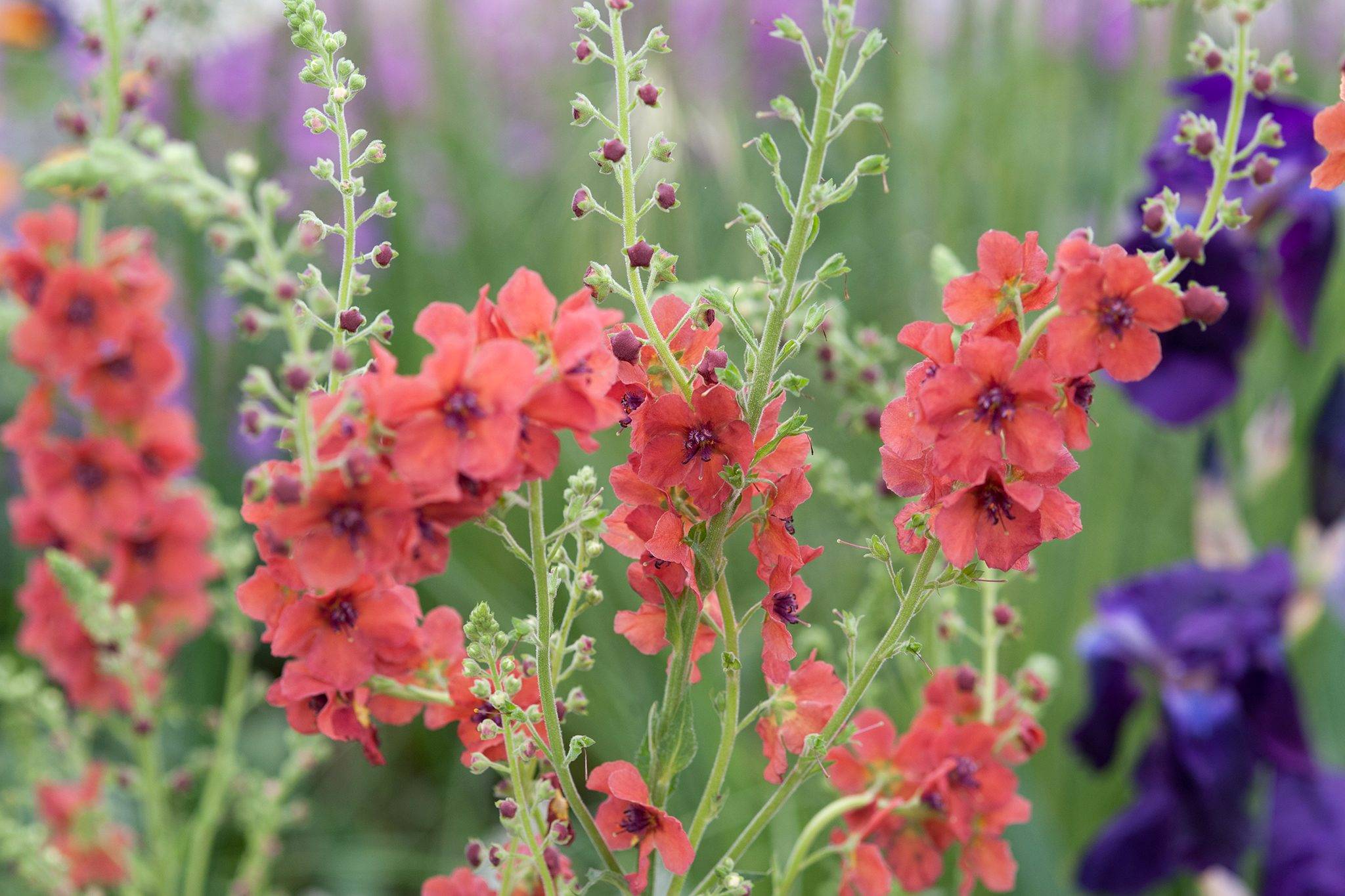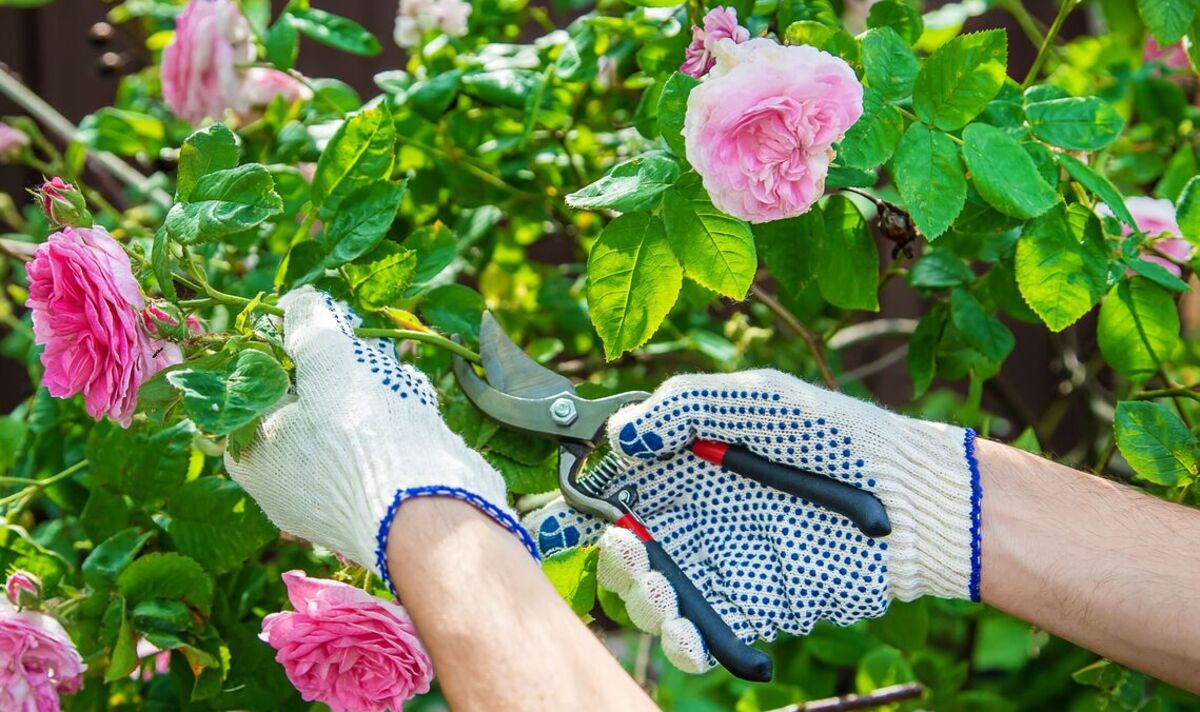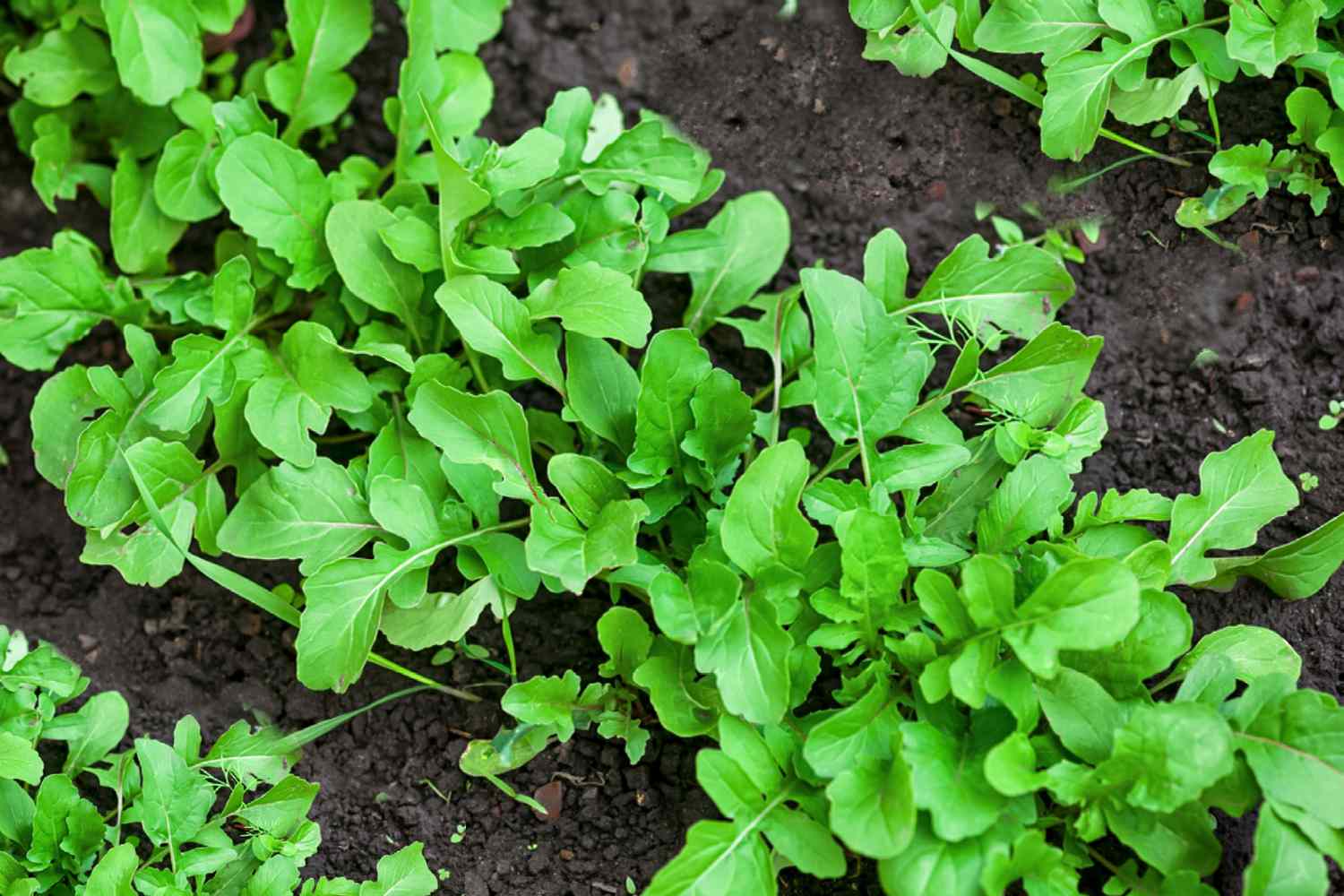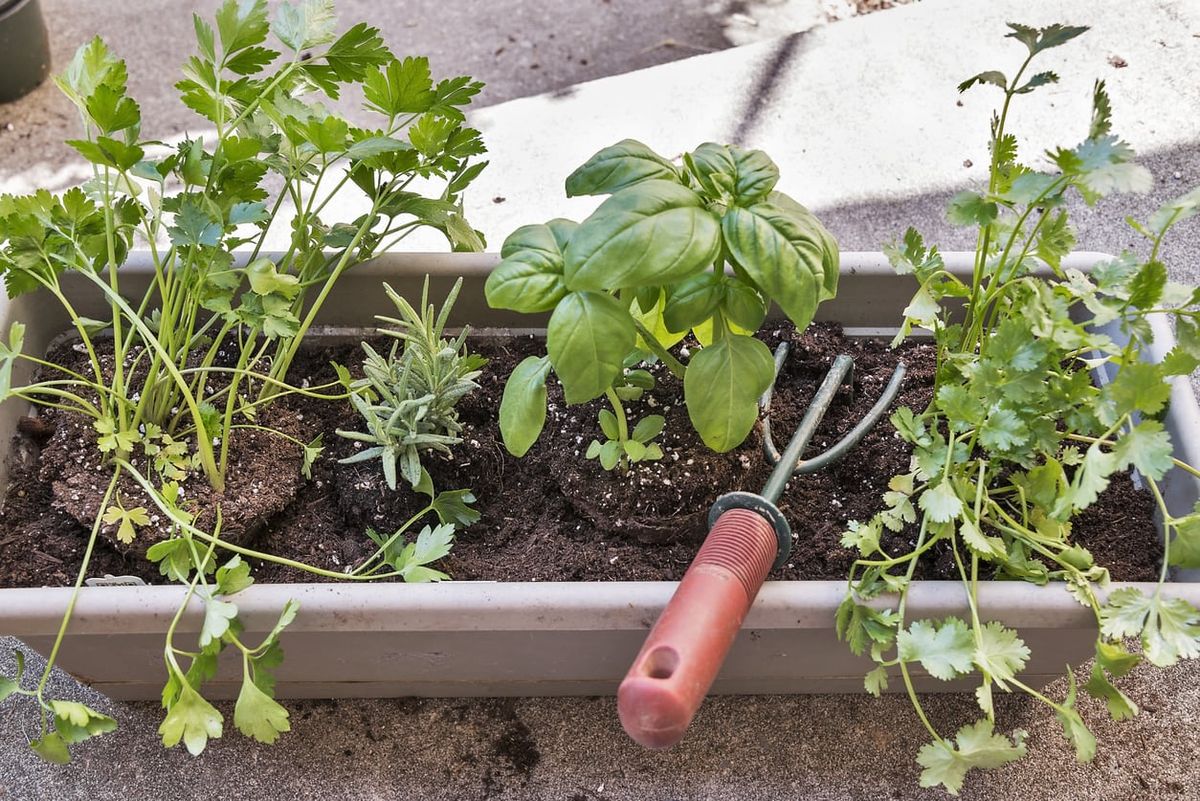Home>Types of Gardening>Ornamental Gardening>When Can I Plant Perennials In Zone 5
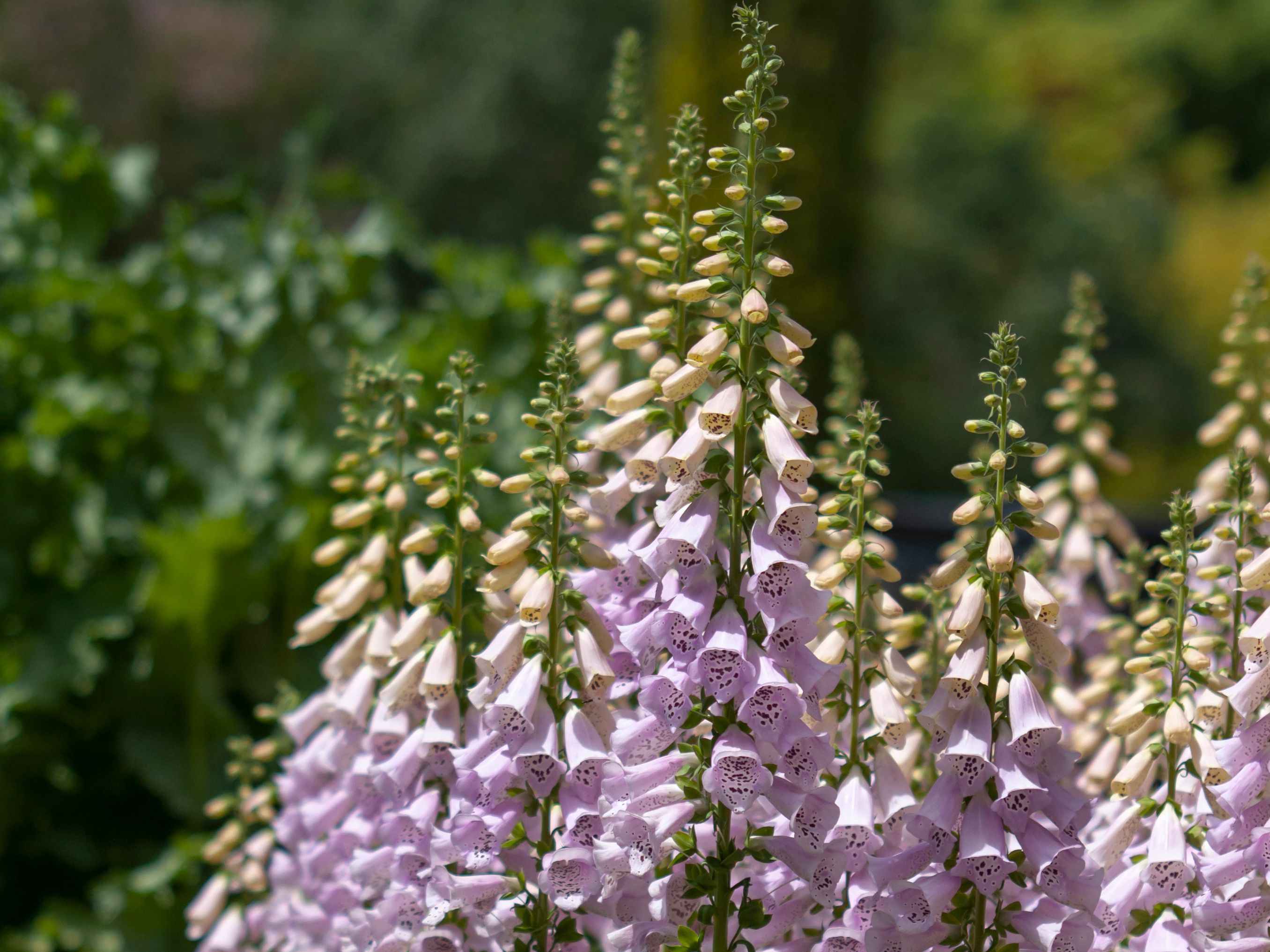

Ornamental Gardening
When Can I Plant Perennials In Zone 5
Modified: February 6, 2024
Discover the best time to plant perennials in Zone 5 for your ornamental gardening needs. Enhance your garden with vibrant and long-lasting flowers.
(Many of the links in this article redirect to a specific reviewed product. Your purchase of these products through affiliate links helps to generate commission for Chicagolandgardening.com, at no extra cost. Learn more)
Table of Contents
Introduction
Welcome to the world of ornamental gardening! If you have a passion for beautiful flowers, vibrant foliage, and creating stunning landscapes, then ornamental gardening is the perfect hobby for you. Whether you have a sprawling backyard or a small patio, adding perennials to your garden can bring year-round color and beauty to your outdoor space.
Perennials are a popular choice among gardeners because they come back year after year, saving you the time and effort of replanting each season. They are also known for their resilience and ability to thrive in various weather conditions.
However, before you start planting, it’s important to understand the specific needs and considerations for your gardening zone. Zone 5 covers a wide range of climates, from cool temperate regions to more extreme conditions with cold winters and hot summers.
In this article, we will explore the best practices for planting perennials in Zone 5, including when to plant, how to prepare the soil, and how to care for your plants throughout the year. Whether you’re a seasoned gardener or just starting out, this guide will provide you with the knowledge and tips you need to create a thriving and beautiful garden in Zone 5.
Understanding Zone 5
Zone 5 is characterized by its cold winters and relatively mild summers. It is typically found in regions where the average minimum winter temperatures range from -20°F to -10°F (-28°C to -23°C). Some areas of Zone 5 may experience even colder temperatures, especially in higher elevations or more northern latitudes.
It’s important to understand your specific zone because it provides valuable information about the types of plants that will thrive in your area. The United States Department of Agriculture (USDA) has developed a plant hardiness zone map, which divides North America into 11 zones based on average annual minimum temperatures. This map serves as a helpful guide for gardeners to determine what plants are best suited for their particular region.
When selecting perennials for Zone 5, it’s important to choose varieties that are hardy and can withstand the cold temperatures of winter. Look for plants that are labeled as suitable for your specific USDA hardiness zone. This will ensure that your plants have the best chance of surviving the winter and coming back strong in the following growing season.
In addition to cold temperatures, Zone 5 may also experience fluctuations in weather throughout the year. Spring and fall can bring frost and even snow, while summer temperatures can reach the upper 80s°F (around 30°C). These temperature extremes can impact the growth and development of your plants, so it’s important to choose varieties that can adapt to these changes.
Understanding the specific characteristics of Zone 5 will help you make informed decisions when it comes to selecting the right perennials for your garden. By planting varieties that are well-suited to your climate, you’ll increase the chances of having a successful and thriving garden.
Selecting Perennial Plants
When it comes to selecting perennial plants for your Zone 5 garden, there are several factors to consider. From bloom time and color to size and maintenance requirements, each plant offers unique characteristics that can enhance your outdoor space. Here are some key considerations to keep in mind:
- Hardiness: As mentioned earlier, it’s crucial to choose perennials that are hardy in Zone 5. Look for plants labeled with a zone range that includes Zone 5 (e.g., Zones 3-7). These plants have been specifically bred or selected to withstand the colder temperatures and variable weather conditions of the region.
- Bloom Time: Consider the bloom time of the perennial plants you’re interested in. Choose a variety of flowering plants that bloom at different times throughout the year. This way, you can enjoy a continuous display of colorful blooms from early spring to late fall.
- Color Palette: Think about the color scheme you want to incorporate into your garden. Whether you prefer vibrant and bold hues or soft pastel shades, selecting perennials in a variety of colors will add visual interest and create a harmonious overall look.
- Plant Size: Take into account the mature size of the perennial plants you choose. Make sure they are suitable for the available space in your garden. Consider both height and width when planning out your garden beds to avoid overcrowding and ensure that every plant has room to grow and flourish.
- Sun Exposure: Pay attention to the sun exposure requirements of the plants you wish to grow. Some perennials thrive in full sun, while others prefer partial shade. Evaluate the conditions in your garden and choose plants that will thrive in your specific light conditions.
- Maintenance: Consider the maintenance requirements of the perennial plants you select. Some plants may require regular deadheading or pruning, while others are more low-maintenance. Be honest with yourself about the amount of time and effort you’re willing to dedicate to your garden, and choose plants accordingly.
By carefully considering these factors when selecting perennial plants for your Zone 5 garden, you can create a diverse and visually appealing landscape that will thrive in your specific climate conditions.
Ideal Planting Conditions
Creating the ideal planting conditions for your perennials is essential for their long-term health and success. Here are some key factors to consider when preparing your garden:
- Soil Type: Perennials generally prefer well-draining soil that is rich in organic matter. Before planting, assess the quality and composition of your soil. If it is heavy clay or sandy, consider amending it with compost or adding organic matter to improve its texture and nutrient content.
- Soil pH: Different perennials have different preferences for soil pH levels. While some plants thrive in acidic conditions, others prefer alkaline soil. Test the pH levels of your soil and adjust accordingly to provide the most suitable environment for your plants.
- Water Drainage: Ensure that your garden has proper water drainage to prevent waterlogged soil, which can lead to root rot and other issues. If you have heavy clay soil, consider adding organic matter or creating raised beds to improve drainage.
- Sun Exposure: Most perennials require adequate sunlight to thrive. Before planting, assess the sun exposure in your garden and select plants that are suitable for the specific light conditions of each area. Full-sun plants typically require at least six hours of direct sunlight per day, while shade-loving plants thrive in areas with dappled or filtered sunlight.
- Spacing: Be mindful of the spacing requirements of the perennials you choose. Proper spacing allows for air circulation and prevents overcrowding, reducing the risk of disease and promoting healthy growth. It’s important to follow the recommended spacing guidelines provided by the plant nursery or seed packet.
- Mulching: Apply a layer of organic mulch around your perennials to help retain moisture, suppress weed growth, and regulate soil temperature. Mulching also adds organic matter to the soil as it breaks down over time, improving its overall health and fertility.
- Companion Planting: Consider companion planting to maximize the benefits and health of your perennials. Certain plants have natural synergies, repelling pests, attracting beneficial insects, or providing shade and support for one another. Research companion planting combinations that work well with the perennials you have chosen.
By creating the ideal planting conditions for your perennials, you are setting them up for success and ensuring they have the best environment to thrive and flourish in your Zone 5 garden.
Timing for Planting Perennials in Zone 5
Timing is crucial when it comes to planting perennials in Zone 5. The ideal time to plant perennials is during the spring or fall seasons when the weather is milder and more favorable for root establishment. However, specific timing can vary depending on the type of perennial and your local climate conditions.
In general, planting in the spring allows perennials to establish their root systems before the heat of summer arrives. Aim to plant early in the season, once the ground has thawed and the soil is workable. This gives the plants ample time to settle in and develop strong roots before the hotter temperatures of summer hit.
Fall can also be an excellent time for planting perennials. The cooler temperatures and increased rainfall provide optimal conditions for root growth and establishment. Planting in the fall allows perennials to focus their energy on root development during the dormant months, leading to stronger, healthier plants in the following spring.
It’s important to note that each perennial plant may have its own specific planting window within the general spring and fall seasons. Some plants, such as early bloomers or those with delicate root systems, may prefer to be planted in early spring to take advantage of cooler temperatures. Others may thrive when planted in late summer or early fall.
When purchasing perennial plants, be sure to read the information provided on the plant labels or consult reputable gardening sources to determine the best planting times for specific varieties. Additionally, local nurseries and gardening experts in your area can offer valuable advice on the optimal planting times based on your Zone 5 location.
By timing your perennial plantings correctly, you give them the best chance to establish strong roots and acclimate to their new environment. This sets the stage for healthy growth, abundant blooms, and the long-lasting beauty of your Zone 5 garden.
Preparing the Soil
Preparing the soil before planting is a crucial step in creating the ideal conditions for your perennials to thrive. By investing time and effort into soil preparation, you can provide your plants with the nutrients and structure they need for healthy growth. Here are some tips for preparing the soil in your Zone 5 garden:
- Remove Weeds: Start by removing any existing weeds or grass from the planting area. Weeds compete with your perennials for nutrients and water, so it’s important to eliminate them before planting.
- Loosen the Soil: Use a garden fork or tiller to loosen the soil in the planting area. Breaking up compacted soil allows roots to penetrate more easily and encourages better root growth.
- Amend with Organic Matter: Add organic matter such as compost, well-aged manure, or leaf mold to enrich the soil. Organic matter improves soil structure, provides essential nutrients, and enhances moisture retention. Mix the organic matter thoroughly into the top few inches of soil.
- Test the pH: Consider testing the pH of your soil using a soil testing kit. Most perennials prefer a slightly acidic to neutral pH range (around 6.0 to 7.0). If your soil is too acidic or alkaline, you can adjust it by adding lime or sulfur accordingly.
- Apply Fertilizer: Before planting, apply a slow-release balanced fertilizer to provide your perennials with a nutrient boost. Follow the instructions on the package for the correct application rate. This helps ensure that your plants have the necessary nutrients for healthy growth.
- Consider Soil Moisture: If your area has excessively dry or sandy soil, you may need to incorporate materials that improve moisture retention, such as peat moss or vermiculite. Conversely, if your soil retains too much moisture, adding perlite or coarse sand can help improve drainage.
- Mulch the Soil: Finally, apply a layer of organic mulch around your newly planted perennials. This helps to conserve soil moisture, suppress weed growth, and regulate soil temperature. Keep the mulch a few inches away from the base of the plants to prevent rot.
By preparing the soil before planting, you are creating an optimal growing environment for your perennials. The enriched, well-drained soil provides the necessary nutrients and water retention for strong root development and healthy growth.
Choosing the Right Location
Choosing the right location for your perennials is essential for their overall health and long-term success. The location you select should provide the ideal growing conditions, taking into consideration factors such as sunlight, soil conditions, and available space. Here are some tips to help you choose the right location for your perennials in Zone 5:
- Sun Exposure: Most perennials require a certain amount of sunlight to thrive. Evaluate the sun exposure in your garden and select plants that are suitable for the specific light conditions of each area. Full-sun plants typically require at least six hours of direct sunlight per day, while shade-loving plants thrive in areas with dappled or filtered sunlight.
- Soil Conditions: Different perennials have varying preferences when it comes to soil type and moisture levels. Assess the soil conditions in your garden, including drainage capabilities and fertility. Choose plants that are well-suited to the specific soil conditions of each area to ensure optimal growth.
- Space Availability: Consider the available space in your garden when selecting perennials. Take into account the mature size of the plants and ensure they have enough room to grow and spread out. Proper spacing allows for good air circulation and reduces the risk of disease.
- Planting Bed Accessibility: If possible, choose a location that is easily accessible for maintenance tasks such as watering, weeding, and deadheading. This will make it more convenient for you to care for your perennials and keep them looking their best throughout the growing season.
- Consider Surrounding Landscape: Take note of the surrounding landscape and plantings when choosing the location for your perennials. Consider how they will fit into the overall design and composition of your garden. Pay attention to factors such as color schemes, height variations, and complementary plant combinations.
- Microclimates: Your garden may have microclimates, which are small areas with slightly different growing conditions due to factors like shade from buildings or trees, wind patterns, or variations in soil moisture. Take advantage of these microclimates and choose plants that thrive in those specific conditions.
By carefully considering these factors and selecting the right location for your perennials, you provide them with the best chance of thriving and producing beautiful blooms year after year in your Zone 5 garden.
Planting Techniques
Proper planting techniques are crucial to ensure the successful establishment and growth of your perennials in Zone 5. Following these guidelines will help give your plants the best start and increase their chances of thriving in your garden:
- Preparing the Hole: Dig a hole that is wider and slightly deeper than the root ball of the plant. This provides enough space for the roots to spread out and establish themselves. Loosen the soil in the hole to encourage root penetration.
- Planting Depth: Place the perennial plant in the hole at the same depth it was previously planted in its container. Avoid planting too deep, as this can suffocate the roots. The crown of the plant (where the stems meet the roots) should be level with or slightly above the surrounding soil.
- Backfilling: Fill the hole with the soil you removed while digging, gently pressing it around the roots. Avoid packing the soil tightly, as this can hinder root growth and drainage. Water the newly planted perennial thoroughly to settle the soil around the roots.
- Adding Mulch: Apply a layer of organic mulch around the base of the plant, leaving a small gap around the stem to prevent rot. Mulch helps retain soil moisture, suppresses weeds, and regulates soil temperature. Aim for a mulch depth of about 2 to 4 inches.
- Watering: After planting, water the perennial thoroughly to ensure the soil is evenly moist. Watering deeply encourages root establishment and helps the plant overcome transplant shock. In the following weeks, monitor the soil moisture and water as needed, keeping it consistently moist but not waterlogged.
- Staking: Some perennials may benefit from staking, especially taller varieties or those prone to flopping over. If necessary, place stakes in the ground near the plant and use twine or plant ties to carefully secure the stems. This provides support and prevents the plant from bending or breaking.
- Labeling: It’s helpful to label your newly planted perennials to keep track of their names, blooming times, and care requirements. This way, you can easily reference this information as your garden grows and plan for proper maintenance.
Following these planting techniques will promote the healthy establishment and growth of your perennials. Providing the right conditions and care from the start will set the stage for a beautiful and thriving garden in Zone 5.
Caring for Perennials in Zone 5
Caring for your perennials is essential to keep them healthy, promote blooming, and ensure their longevity in Zone 5. Here are some important care practices to keep in mind:
- Watering: Adequate watering is crucial, especially during periods of drought or hot weather. Monitor the soil moisture and water your perennials deeply when the top inch of soil feels dry. Water in the morning to allow foliage to dry before nighttime, reducing the risk of fungal diseases.
- Mulching: Maintain a layer of organic mulch around your perennial plants. Mulch helps to conserve soil moisture, suppress weeds, and regulate soil temperature. Refresh the mulch layer annually to maintain its effectiveness and appearance.
- Deadheading: Regularly remove spent flowers by deadheading to encourage prolonged blooming and prevent the plant from diverting energy to seed production. Cut faded flowers just above a set of healthy leaves or to a lateral bud to promote new growth.
- Dividing: Some perennials benefit from division every few years to maintain their health and vigor. Dividing helps control size, rejuvenate overcrowded clumps, and promote better flowering. Research the specific division requirements for each perennial species and divide them in the appropriate season.
- Fertilizing: Apply a balanced, slow-release fertilizer in early spring when new growth emerges. Follow the recommended application rates on the fertilizer package and avoid over-fertilizing, as this can lead to excessive foliage growth and reduce flowering.
- Pest and Disease Control: Regularly inspect your perennials for signs of pests or diseases. Early detection and intervention can prevent issues from spreading and causing significant damage. Use organic pest control methods whenever possible to minimize harm to beneficial insects and pollinators.
- Winter Protection: In Zone 5, where temperatures can become extremely cold, certain perennials may require winter protection. Apply a layer of mulch or straw around the base of the plants to insulate the roots. Consider using protective coverings like burlap or frost blankets for more delicate plants.
- Seasonal Pruning: Prune your perennials as needed to maintain their shape, remove damaged or dead foliage, and promote overall plant health. Each plant may have specific pruning requirements, so research the appropriate techniques and timing for each species.
- Monitoring and Observing: Keep a close eye on your perennials throughout the growing season. Look for any changes in growth or appearance, as these can be indications of nutrient deficiencies, pests, or diseases. Regular observation allows you to address issues promptly and keep your plants in optimal condition.
By providing proper care and attention to your perennials in Zone 5, you can enjoy a thriving and beautiful garden that continues to delight year after year.
Common Challenges in Zone 5
Gardening in Zone 5 presents its own unique set of challenges due to the cold winters and variable weather conditions. It’s important to be aware of these challenges and take proactive measures to help your perennials thrive. Here are some common challenges you may encounter in Zone 5 and how to address them:
- Cold Winter Temperatures: One of the main challenges in Zone 5 is the extreme cold temperatures during winter. To protect your perennials, consider using mulch or other winter covers to insulate the roots. Select hardy plants that are suitable for your specific USDA hardiness zone.
- Fluctuating Weather: Zone 5 can experience significant weather fluctuations throughout the year, with frost and snow in spring and fall and hot summers. It’s important to choose perennials that can tolerate these temperature variations. Make sure your plants are well-hydrated during dry spells and take steps to protect them during extreme weather events.
- Short Growing Season: The shorter growing season in Zone 5 can pose a challenge for gardeners. Start seeds indoors or purchase established plants from reputable nurseries to give your perennials a head start. Choosing early blooming varieties can also help you enjoy the beauty of flowers before the season ends.
- Pests and Diseases: Like any garden, Zone 5 gardens are susceptible to pests and diseases. Common pests in this region may include aphids, slugs, and Japanese beetles, while fungal diseases like powdery mildew and rust can also be a concern. Implement integrated pest management practices, such as regular inspection, promoting biodiversity, and using appropriate organic methods to control pests and diseases.
- Soil Quality: Zone 5 gardens may have soil compositions that are high in clay or sand, which can impact drainage and nutrient availability. Amending the soil with organic matter, such as compost or well-aged manure, can improve its structure and fertility. Regular soil testing can also help ensure that nutrient levels are adequate for optimal plant growth.
- Wildlife Damage: Wildlife can pose a challenge in Zone 5 gardens, particularly deer, rabbits, and groundhogs. Consider using fences and repellents to protect your plants from browsing animals. Selecting plants that are less attractive to wildlife can also help deter damage.
Be proactive in addressing these common challenges in Zone 5 to ensure the health and resilience of your perennials. With proper planning and care, you can overcome these obstacles and create a thriving and beautiful garden that can withstand the specific conditions of your region.
Conclusion
Ornamental gardening in Zone 5 offers a wonderful opportunity to surround yourself with the beauty and splendor of perennial plants. By understanding the unique characteristics of Zone 5, selecting suitable plants, and providing them with the right conditions and care, you can create a thriving garden that brings joy and color throughout the seasons.
Remember to choose perennials that are hardy for your specific USDA hardiness zone and plant them at the appropriate times to promote successful establishment. Prepare the soil by improving its structure and fertility, and choose the right location based on sunlight, soil conditions, and available space.
Implement proper planting techniques to give your perennials the best start, and continue caring for them by watering, mulching, deadheading, and dividing as needed. Pay attention to potential challenges in Zone 5, such as cold temperatures, fluctuating weather, and pests, and take proactive steps to address them.
With each passing year, your Zone 5 garden will mature and grow more beautiful as the perennials become established and develop robust root systems. By following these guidelines and enjoying the ongoing process of learning and experimenting, you will have the pleasure of witnessing your garden flourish and bloom, creating a haven of natural beauty right in your own backyard.
